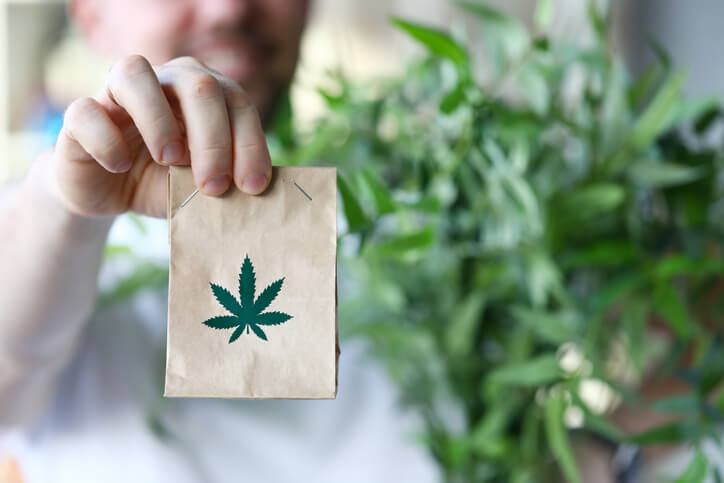Wondering How to Create Cannabis Labels? Get the Full Guide Here
Cannabis has become a booming industry in recent years, with an increasing number of products hitting the market. As the industry grows, it’s crucial for cannabis businesses to stand out and establish their brand identity. One essential aspect of branding in the cannabis industry is creating eye-catching and compliant labels. In this comprehensive guide, we’ll delve into how to create cannabis labels that not only meet regulatory requirements but effectively represent your brand.
1. Understand Legal Requirements
Before diving into the design and creation process, it’s essential to understand the legal requirements associated with cannabis labeling. These requirements can vary significantly depending on your location, so always ensure that you’re compliant with local and federal regulations. Here are some common elements to consider:
- Content: Labels must include specific information such as product name, potency, strain type, and any applicable warnings or disclaimers.
- Symbols and warnings: Many regions require symbols and warnings, such as “keep out of reach of children” and “not for resale.”
- Cannabis origins: Depending on the region you’re in, you may need to indicate the origin or cultivation method of your cannabis
Want more information on what you need to include on your cannabis label? Check out our in-depth guide here.
2. Make Careful Design Considerations
Once you’ve got a solid understanding of the regulatory requirements, it’s time to delve into the design process. Your cannabis label is an opportunity to establish your brand identity and make a lasting impression on customers. Here are some design considerations to keep in mind:
- Brand aesthetics: Your label design should align with your brand’s overall look and feel. Consistency in branding helps customers recognize and remember your products.
- Color scheme: Choose a color scheme that reflects your brand and appeals to your target audience. Different colors can evoke different emotions, so consider the psychology of color in your design.
- Typography: Select fonts that are easy to read and align with your brand’s personality.
- Imagery: Use images, illustrations, or graphics that resonate with your brand and the product. High-quality imagery can make your label more appealing.
3. Perform a Label Application Assessment
The way you apply your labels is an extremely important and often overlooked part of the label design process. You want labels that adhere well to the packaging and remain in good condition during storage and handling. Some application methods include:
- Pressure-sensitive labels: These labels have an adhesive backing that sticks to the product’s packaging when pressure is applied.
- Sleeve labels: These labels are applied by sliding a printed sleeve over the container and then heat shrinking it for a snug fit.
- Glue-applied labels: These labels use a specific adhesive, which requires an adhesive machine to apply them to the product packaging.
4. Choose the Right Materials
Once you’ve determined how your label will be applied, you can figure out which types of materials you’ll use for your labels. A label is made up of a liner, release coat, adhesive, face stock, and top coat. There are many different materials available, and the ones you choose will depend on your specific needs.
- Liner: This initial layer serves as the backing paper, enabling labels to be easily released onto the product surface.
- Release coat: The release coat prevents adhesive complications by allowing the face stock and adhesive to separate smoothly.
- Adhesive: The bonding agent is the key element in affixing the label to the container’s surface. You can choose multiple options — such as repositionable, removable, or permanent adhesives — depending on your needs.
- Face stock: The face stock is the canvas for your design, coming in various materials with the ideal choice depending on the product’s environment.
- Top coat: The top coat is the outermost layer. It incorporates coatings or laminations to enhance the label’s durability, protect it, and elevate its overall appearance and design.
5. Work with an Experienced Label Manufacturer
If you’re wondering how to create cannabis labels, it’s best to partner with an experienced label manufacturer like DRG Technologies. With decades of experience, we can help you create the best cannabis labels for your needs. Headquartered in Safford, Arizona with two facilities in Mexico, we service a wide range of customers across North America. Each day, our dedicated team passionately engages in pioneering solutions that empower our partners to optimize production, slash costs, streamline supplier networks, and ultimately deliver better products.
As a privately held, family-owned company now in its second generation of leadership, our agility knows no bounds. Armed with state-of-the-art equipment, an extensive array of product solutions, a coveted UL certification, and an unwavering commitment to surmounting the most formidable supply chain hurdles, we’ve emerged as the label manufacturing partner of choice for countless organizations. We’re ready to replicate this success for you.
Need to Know More About How to Create Cannabis Labels? Reach out to Us Today
Your success story starts here. Reach out to us for more information.

